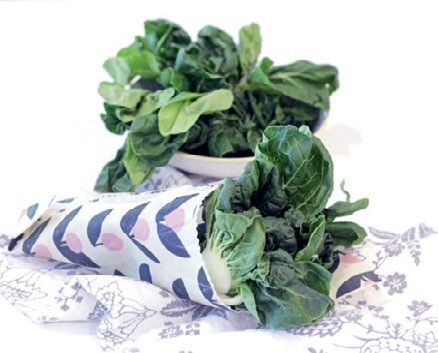Small efforts go a long way — here are 30 things you can do at home to help save the environment.


1 ADOPT A MINIMALIST LIFESTYLE

2 CUT DOWN ON WASTE
3 INSTALL SOLAR FILMS IN YOUR WINDOWS

4 UPCYCLE AND RESTORE OLD FURNITURE
Instead of tossing old furniture, a fresh coat of paint or new fittings can have you seeing worn-out pieces in a new light. Consider an unexpected colour on an oriental design or adding quirky knobs to a vintage cabinet. Not quite a handyman? Send your furniture to places like Hock Siong & Co. and Second Charm for upholstery and restoration work.

5 CHOOSE WOOD FURNITURE FROM SUSTAINABLE SOURCES

6 USE HEAT REFLECTIVE PAINTS

7 CHOOSE FRONT-LOAD INSTEAD OF
TOP-LOAD WASHERS

8 REPLACE PLASTIC FOOD WRAPS WITH ECO-FRIENDLY OPTIONS


9 CONSOLIDATE YOUR LAUNDRY AND DISHES

10 PLACE YOUR FAN AT THE RIGHT SPOT

11 THINK ABOUT YOUR HOME TEXTILES
Cotton, for example, is a widely used natural material but the cultivation of it often involves the use of chemicals, insecticide and pesticide. It’s also commonly treated with formaldehyde to reduce creasing. Earth-friendly alternatives include organic cotton, bamboo, natural hemp, soy and lempur as well as recycled polyester.

12 CUT FOOD AND FRUIT WASTE

13 CHOOSE NATURAL CLEANING AGENTS
Use natural solutions for cleaning instead of chemicalladen ones that pollute the earth. Lemon juice, baking soda, and white vinegar are all gentle cleaners that are safe for the environment and pet-friendly, too.
Make your own eco-friendly toilet bomb to unclog your WC:
2-3 tablespoons of water Natural essential oil
5. Store them in ice trays and leave them to dry for a couple of days. Once dry, remove one of the toilet bombs and throw them into your toilet bowl. Let it fizz up for a couple of minutes before you flush.

14 ENSURE YOUR CEILING FAN IS SPINNING THE RIGHT WAY
Check the direction of your ceiling fan – to get a direct downward draft, your fan should be spinning anticlockwise as you look up at it. This pulls the cooler air down.
15 INVEST IN AN EFFICIENT RAIN SHOWER HEAD
A fancy rain shower adds a touch of luxury to your bathroom but its voluminous stream of water increases the likelihood of higher water usage. But if a rain shower is at the top of your dream home wishlist, get your bathroom outfitted with one that’s water-efficient, like Hansgroshe’s Crometta Overhead Shower 160 1jet EcoSmart 9 l/min. It injects air into the water stream for a heavier spray without actually requiring as much water.
16 CONSIDER WATEREFFICIENT WCS

17 USE CURTAINS AND BLINDS TO REDUCE HEAT

18 PLACE REUSABLE BAGS STRATEGICALLY
You’ve bought that reusable bag but there’s just one problem - you’re forgetting to bring it out. Make it a habit to stash it back in your day bag when it’s not in use, have one in the car, or keep it somewhere visible (like in a basket beside the front door) so you’ll remember to grab it before you go.
19 SAVE WATER AS MUCH AS YOU CAN

20 CUT DOWN ON CANNED DRINKS

Zero Waste SG is a local independent charity which aims to drive the zero waste movement in Singapore through education and advocacy, focusing on the areas of food waste, plastic disposables, household recycling and organisational waste. Manager Pek Hai Lin shares her insights on how individuals can do their part in reducing waste.
10 TIPS ON REDUCING WASTE IN SINGAPORE
• The best way to reduce waste is at its source. Think twice before buying anything, even if it’s on sale! Avoid hoarding as it encourages throwing away instead of reusing items.
• Reuse shoe boxes, or other boxes that your purchases come in, to organise your home.
• Consider purchasing home decor items at places like Salvation Army or Carousell. Many of the secondhand pieces are in excellent condition, and you can save money too while giving them a new lease of life!
• Declutter at the source by bringing your own grocery bags, and take plastic trash bags only when you need them.
• When heading down to your nearest eatery for a takeaway, consider bringing a container along to reduce singleuse disposables.
• Separate wet and dry waste – the proper way is to drain liquids from wet waste first, then bag it so it doesn’t touch the dry waste. More than 80% of dry waste can be recycled.
• Before sending items for recycling, ensure the items are clean and dry. There should be no food waste inside as it will contaminate the rest of the recyclables!
• If your recycling bin is a blue bin that you see around estates, you can mix metal, plastic, paper and glass together.
• Items like clothes, soft toys, mattresses and furniture should be donated at various places in Singapore instead of being placed in the blue bins, as they cannot be recycled.
• Dispose of your electronic waste at various recycling points islandwide — find out where they’re located at, on the National Environmental Agency (NEA) website. When disposing of rechargeable batteries, tape the ends first so as to ensure that they won’t be a potential fire hazard.























